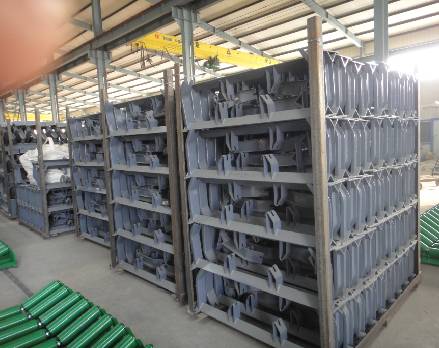 Afrikaans
Afrikaans  Albanian
Albanian  Amharic
Amharic  Arabic
Arabic  Armenian
Armenian  Azerbaijani
Azerbaijani  Basque
Basque  Belarusian
Belarusian  Bengali
Bengali  Bosnian
Bosnian  Bulgarian
Bulgarian  Catalan
Catalan  Cebuano
Cebuano  Corsican
Corsican  Croatian
Croatian  Czech
Czech  Danish
Danish  Dutch
Dutch  English
English  Esperanto
Esperanto  Estonian
Estonian  Finnish
Finnish  French
French  Frisian
Frisian  Galician
Galician  Georgian
Georgian  German
German  Greek
Greek  Gujarati
Gujarati  Haitian Creole
Haitian Creole  hausa
hausa  hawaiian
hawaiian  Hebrew
Hebrew  Hindi
Hindi  Miao
Miao  Hungarian
Hungarian  Icelandic
Icelandic  igbo
igbo  Indonesian
Indonesian  irish
irish  Italian
Italian  Japanese
Japanese  Javanese
Javanese  Kannada
Kannada  kazakh
kazakh  Khmer
Khmer  Rwandese
Rwandese  Korean
Korean  Kurdish
Kurdish  Kyrgyz
Kyrgyz  Lao
Lao  Latin
Latin  Latvian
Latvian  Lithuanian
Lithuanian  Luxembourgish
Luxembourgish  Macedonian
Macedonian  Malgashi
Malgashi  Malay
Malay  Malayalam
Malayalam  Maltese
Maltese  Maori
Maori  Marathi
Marathi  Mongolian
Mongolian  Myanmar
Myanmar  Nepali
Nepali  Norwegian
Norwegian  Norwegian
Norwegian  Occitan
Occitan  Pashto
Pashto  Persian
Persian  Polish
Polish  Portuguese
Portuguese  Punjabi
Punjabi  Romanian
Romanian  Russian
Russian  Samoan
Samoan  Scottish Gaelic
Scottish Gaelic  Serbian
Serbian  Sesotho
Sesotho  Shona
Shona  Sindhi
Sindhi  Sinhala
Sinhala  Slovak
Slovak  Slovenian
Slovenian  Somali
Somali  Spanish
Spanish  Sundanese
Sundanese  Swahili
Swahili  Swedish
Swedish  Tagalog
Tagalog  Tajik
Tajik  Tamil
Tamil  Tatar
Tatar  Telugu
Telugu  Thai
Thai  Turkish
Turkish  Turkmen
Turkmen  Ukrainian
Ukrainian  Urdu
Urdu  Uighur
Uighur  Uzbek
Uzbek  Vietnamese
Vietnamese  Welsh
Welsh  Bantu
Bantu  Yiddish
Yiddish  Yoruba
Yoruba  Zulu
Zulu conveyor belt return rollers
Understanding Conveyor Belt Return Rollers Design, Importance, and Maintenance
Conveyor belt systems are integral to many industries, facilitating the efficient movement of materials and goods. A crucial component of these systems is the return roller, which plays a vital role in ensuring the smooth operation and longevity of the conveyor belt. In this article, we will explore the design, importance, and maintenance of conveyor belt return rollers, shedding light on their function and the best practices for their upkeep.
Design of Return Rollers
Return rollers, also known as return idlers, are positioned under the conveyor belt's return section, where the belt reverts to the starting point after delivering its load. They are designed to support the empty belt, prevent sagging, and maintain proper tension. Traditionally, return rollers are cylindrical, ensuring that they do not create excessive friction while the belt passes over them.
Typically made from materials such as steel or rubber, return rollers are designed to withstand various environmental conditions and loads. Various configurations and sizes of rollers exist to accommodate different types of belts and operational requirements. Common designs include standard, troughing, and flat return rollers. Each design serves a specific purpose, ensuring the belt remains in optimal condition while minimizing wear and tear.
Importance of Return Rollers
Return rollers are essential for several reasons
1. Support and Stability They provide necessary support for the conveyor belt as it travels back to the material feed point. By maintaining an even conveying surface, return rollers prevent belt misalignment and promote smooth operation.
2. Reduced Wear and Tear By ensuring that the conveyor belt maintains its shape and position, return rollers help reduce excessive wear on both the belt and the conveyor system. This contributes to a longer lifespan for both components.
3. Efficiency A well-maintained return roller system enhances the overall efficiency of the conveyor system. Reducing friction and wear not only results in lower energy consumption but also minimizes downtime for repairs and replacements.
conveyor belt return rollers

4. Cleanliness Return rollers assist in keeping the underside of the conveyor belt clean. By minimizing the accumulation of materials, they help prevent spillage, which could lead to operational hazards and increased maintenance costs.
Maintenance of Return Rollers
The maintenance of conveyor belt return rollers is essential to ensure optimal performance and longevity. Here are some best practices
1. Regular Inspections Conduct frequent inspections of return rollers to identify signs of wear, damage, or misalignment. Look for unusual sounds, vibrations, or deviations in the belt path that may indicate an issue.
2. Lubrication Ensure that lubrication points are kept clean and well-greased. Regular lubrication reduces friction and wear, contributing to a smoother operation and an extended lifespan for the rollers.
3. Alignment Checks Misalignment can lead to shortened roller life and increased wear on the conveyor belt. Periodically check the alignment of return rollers to ensure they are properly positioned and make adjustments as necessary.
4. Material Monitoring Monitor the type of materials being conveyed. Some materials can cause excessive wear or damage to return rollers. If needed, consider using rollers designed for specific material types to mitigate potential issues.
5. Replacement Be proactive about replacing worn or damaged rollers. Continuing to operate with subpar components can lead to further damage to the conveyor system and increased operational costs.
Conclusion
In conclusion, conveyor belt return rollers are a critical component of conveyor systems, providing stability, support, and efficiency. By understanding their design and significance, as well as implementing effective maintenance practices, industries can enhance the performance and longevity of their conveyor systems. Regularly inspecting, lubricating, and properly aligning return rollers can prevent downtime and costly repairs, ultimately contributing to smoother operations and increased productivity. As the backbone of material handling systems, return rollers deserve careful attention and care to ensure that they continue working seamlessly in various industrial applications.
-
Revolutionizing Conveyor Reliability with Advanced Rubber Lagging PulleysNewsJul.22,2025
-
Powering Precision and Durability with Expert Manufacturers of Conveyor ComponentsNewsJul.22,2025
-
Optimizing Conveyor Systems with Advanced Conveyor AccessoriesNewsJul.22,2025
-
Maximize Conveyor Efficiency with Quality Conveyor Idler PulleysNewsJul.22,2025
-
Future-Proof Your Conveyor System with High-Performance Polyurethane RollerNewsJul.22,2025
-
Driving Efficiency Forward with Quality Idlers and RollersNewsJul.22,2025





























